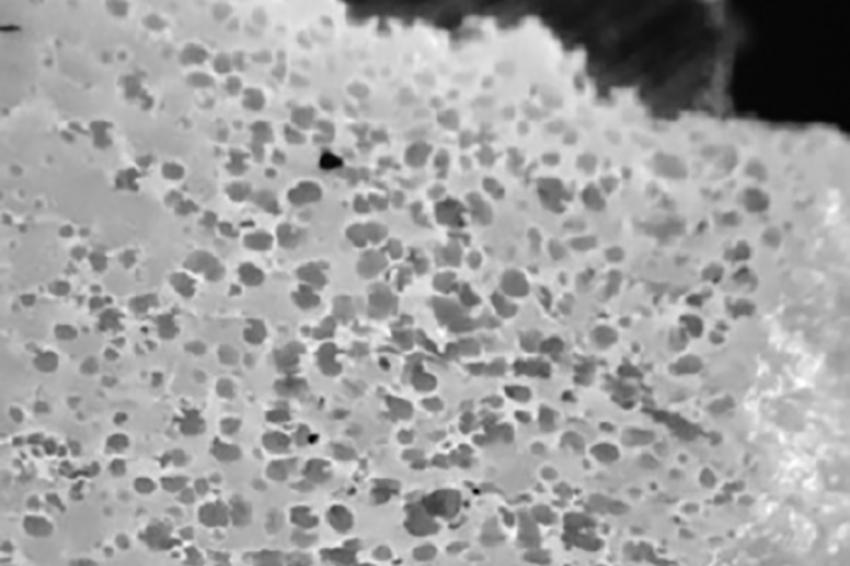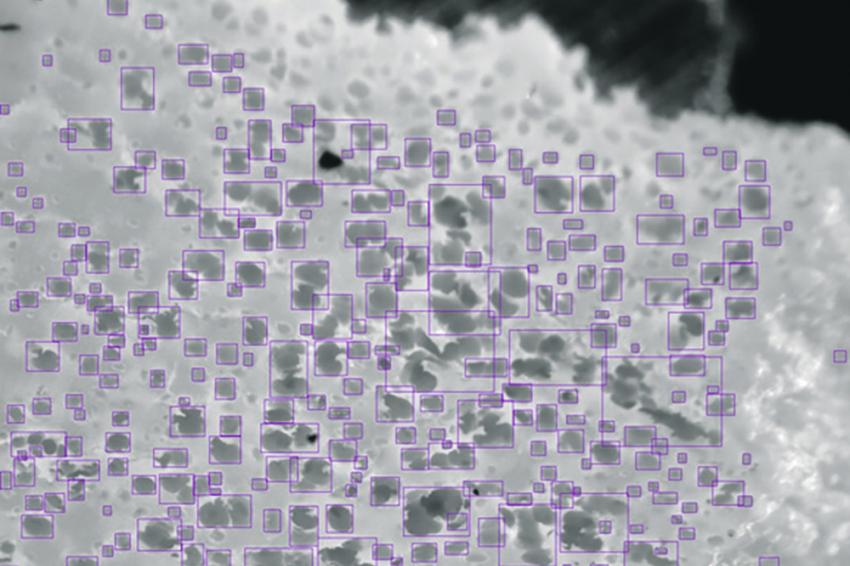Analyzing Pores Deep-down
Quality Control of Porous or Granular Substances with Modern Image Processing
Autonomous vehicles, self-learning machines, interconnected systems of production and storage units or self-stocking warehouses: The digitalization of society and the industrial revolution are moving relentlessly forward and offer technologies and innovations with a bright and promising future that are already reality or just one step away. And in all industrial sectors the relevance of image processing is continuously on the rise.
Image processing includes the capturing, modification and analysis of images, for instance in the context of production or packaging processes. The main objective is to extract relevant information from the images in order to steer processes, test products, document completeness or integrity or perform general quality control.
For a long time, the potential to use image processing to gain information and steer processes was very limited indeed. In recent years this boundary has been steadily pushed outwards and previously unimaginable performance has become possible. For the largest part this is due to the greatly increased capacity of computer processors and graphic chips. Additionally, image processing is of relevance to the development of artificial neural networks, which are relentlessly gaining in importance since they further the development of artificial intelligence (AI). Combining AI and image processing in the context of machine learning enables the advancement of systems that help users to identify the criteria which are relevant to quality in the first place. A self-learning system can be fed with data relating to production, surroundings and images together with information about quality parameters, error classes or other assessment values. While running, the system gathers all the data of the production process and assesses these autonomously. These assessments can subsequently be corrected by the user if needed. Over time such a system will increase its precision progressively. Parameters that are critical for the quality can thus be identified among all incoming data as well as parameters that do not correlate with quality at all.
The fourth industrial revolution brings great challenges — as mentioned above, digitalization and networking of production — and solutions based on the analysis of digital images are subsequently becoming more and more popular. The market for companies offering image processing solutions is still young but has grown rapidly in the last few years — with no end in sight. The chemical sector is especially eager to use so called “machine vision” systems. One example of a practical application is determining the chemical composition of substances with the help of hyperspectral imaging.
So-called blob analysis is a further example. It is used in many applications that fulfil requirements of the chemical industry, such as examining porous and granular substances in order to define relevant quality parameters, respectively verify these. Before, these kinds of analyses would have required a lot of time and personnel, if they were even possible at all. Blob analysis is based on digital images taken by industrial cameras. As a rule, these are grey-scale images which means each pixel can be represented by a brightness value. If we take an 8-bit grey-scale image, each pixel can have 28, or 256, different values of brightness. A value of 0 represents a black pixel, 255 a white one. In order to gain further information using blob analysis, the grey-scale image needs to be transformed into a binary image which only contains the values 0 and 255. The first step is to use filters on the original grey-scale image in order to eliminate errors or to highlight specific aspects which will later be recognized by an algorithm. It might for instance be an advantage to increase the contrast of the image so that light or dark parts can be separated more easily later on.
The next step is the creation of the binary image by using a so-called threshold-filter. It is called this because it is based on a threshold to which the brightness value of each pixel is compared. Is the value below the threshold, the pixel is assigned the value 0, meaning it is turned black. All other pixels are assigned the value 255 and subsequently turn white. After applying the filter, the image finally consists of only black and white pixels. It is of great importance for the subsequent quality and precision of the blob analysis that the threshold is set to a suitable value.
The binary image can then be evaluated using analytic algorithms. Blob analysis helps to find image areas where the brightness differs from the background. These can be dark areas on light background or vice versa — e. g. impurities or pollution on a surface. If dark areas need to be detected in light surroundings, the algorithm finds black pixels and compares them to their immediate surroundings to establish connected areas of black pixels which form a so-called blob. In this way each black pixel is assigned to its own specific cluster and can thus be sorted, differentiated and statistically analyzed. It is possible, for example, to only evaluate blobs with a certain dimension, a minimum roundness or blobs in defined, distinct areas of the image. All blobs which meet the criteria can be assigned specific values such as quantity, area, height, width, circumference, roundness and a number of values derived of these. It is thus for instance possible to calculate what percentage of the total area is covered by the blob or the size of the blob in relation to position. But not only porous materials — such as foamed plastic or construction materials, packaging, foam material or bakery products — can be analyzed in this manner. It is also possible to detect and analyze foreign particles differing in color or suspended solids in a carrier medium.
This technology is employed in Safe-Ident Cell, which is the new product of image processing company Strelen Control Systems. The system offers the solution for offline test stations which need to quickly and simply determine the composition of a material, the number and size of pores or the presence, frequency and quality of particles. The software uses data logging to guarantee an overview of all collected data and determines time trends in production quality. By offering the implementation of varying cameras and optics this solution can be adjusted to different object sizes, operating distances and monitoring stations, thus allowing for customized solutions. This kind of solution is in high demand in the industry and it is universally applicable, as is shown by the successful implementations in the cosmetic, chemical and pharmaceutical sectors, where the company is currently working on the realization of a particle detector.
Contact
Strelen Control Systems GmbH
Kirschberg 27
64347 Griesheim








